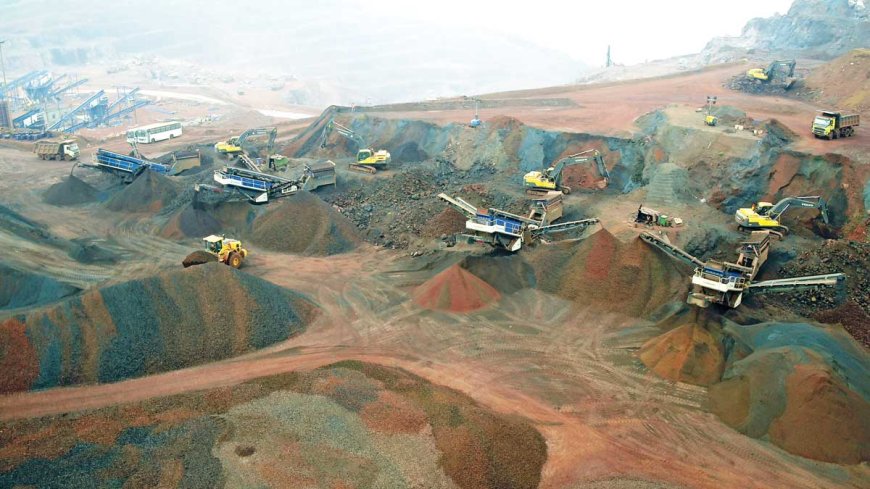Large-scale operation in India
Dr. SR Samal, Managing Director, Kalinga Commercial Corporation. Daily production target with Kleemann MOBISCREEN MS 952 EVO and MS 953 EVO increased. The red colour usually allows you to spot it from a distance:

Daily production target with Kleemann MOBISCREEN MS 952 EVO and MS 953 EVO increased.
The red colour usually allows you to spot it from a distance: iron ore. The volcanic rock is mainly used in the manufacture of steel. India has vast reserves of iron ore and is the second biggest steel producer in the world. The mobile screening plants MOBISCREEN EVO from Kleemann are used during the extraction of the important material.
India’s total iron ore production for 2019 was 231 million tons, approx. 90 percent of which was used in domestic steel production. Hematite and magnetite are the iron ores mainly found in India. Thanks to its high quality and lumpy properties, hematite is the most sought-after iron ore for the local steel industry. Due to its fine grain properties, the processing method of the sedimentary rock usually demands a lot from the screens. This is where the classifying screens MS EVO provide a valuable service. In an iron ore extraction site in Keonjhar in the federal state of Orissa, Kalinga Commercial Corporation (KCCL) is responsible for iron ore extraction on behalf of the state-owned company Orissa Mining Corporation.
Iron ore classified into up to four fractions
Since January 2020, six MOBISCREEN EVO mobile screening plants from Kleemann have been in use at the Keonjhar location screening material to the desired final grain sizes. More than 20 excavators are deployed for extraction, handling and loading of the ore. 140 large dumper trucks transport the material from the mines for further processing by the screening plants.
Five double-deck screening plants MOBISCREEN MS 952 EVO and a triple-deck screening plant MS 953 EVO make classification of the blasted and then crushed material into up to three or four (with the MS 953 EVO) fractions possible. With the use of these six mobile classifying screens, KCCL has achieved a continuous daily production target of 30,000 tons in two-shift operation. The desired final grain sizes of 0-10 mm and 10-40 mm are thus produced.
Screening plants also impress under extreme conditions
The screening plants MOBISCREEN MS EVO also operate precisely and highly efficiently under extreme conditions: in the iron ore open pit mining site in Keonjhar, they process feed material with a humidity content of 6 – 7 % without any problems.
Dr. SR Samal, Managing Director, Kalinga Commercial Corporation: “We have been using Kleemann screening plants for more than two years. These plants have proved their value with regard to product quality and output. Over the years, they have become an indispensable element of our operation. The service, above all, is exemplary. The co-operation with the Wirtgen Group was crowned with success. The investment was worthwhile because we managed to achieve our goals within the defined period.”
Kleemann MS EVO series – precise and efficient
The classifying screens in the EVO series impress with their high productivity, good transport properties and first-class screen results. The product series includes the two double-deck classifying screens MS 702 EVO and MS 952 EVO as well as the triple-deck classifying screens MS 703 EVO and MS 953 EVO. Thanks to the particularly large screening surfaces of 7 or 9.5 m², high production outputs combined with effective screening of up to 4 first-class final products can be achieved. Depending on the application case, throughputs of up to 350 t/h (MS 702 and MS 703 EVO) or 500 t/h (MS 952 and MS 953 EVO) are possible.
With the MOBISCREEN EVO screening plants, Kleemann also places an emphasis on the subject of safety. The plants can be operated conveniently with intuitive control system via a mobile control panel that can be attached at three different points on the plant. This increases work and operational safety. Thanks to the easily accessible work platforms, service activities can be carried out quickly and screen surfaces can be replaced without any problems. All other service components can be accessed from the ground so that maintenance tasks can be executed without any complications.
These plants have proved their value with regard to product quality and output. Over the years, they have become an indispensable element of our operation. The service, above all, is exemplary. The co-operation with the Wirtgen Group was crowned with success.
Hits: 46








